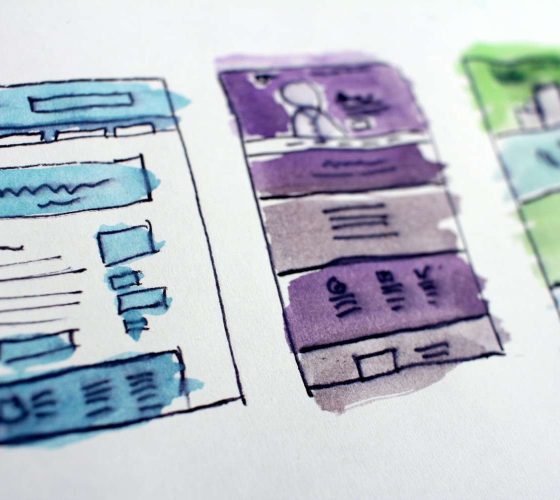In the modern business landscape, digital resources are evolving at a pace never seen before. Fostering effective communication and collaboration among employees is essential for the success of businesses, ensuring that operations flow seamlessly and efficiently. Modern intranets play a crucial role in facilitating these interactions, and SharePoint emerges as a powerful platform for building feature-rich, user-friendly intranet solutions. In this in-depth exploration, we’ll delve into the world of modern intranets and how SharePoint can be harnessed to design and implement intranets that truly empower organisations to discover the most effective collaboration techniques for their teams.
What is SharePoint?
SharePoint, developed by Microsoft, is a versatile platform known for its prowess in document management and collaboration. It serves as the digital hub where teams can share files, manage content, and collaborate seamlessly. SharePoint’s capabilities, however, extend far beyond simple document storage; it is a robust intranet solution that has evolved to meet the diverse needs of modern businesses.

According to Microsoft, over 190 million people across over 200,000 organisations use SharePoint, including M&S, Nascar, and Quantas, among many others (source). These high-profile clients demonstrate just how highly regarded SharePoint is in the corporate world, and highlights the benefits of opting for a solution that is so easy to scale up or down depending on your business needs.

Key Benefits of Using SharePoint for Intranets
Streamlined Collaboration
SharePoint simplifies collaboration by providing a centralized hub for teams to share documents, work on projects, and engage in discussions. Its integration with Microsoft 365 apps like Teams, Outlook, and OneDrive ensures a seamless collaboration experience.
Teams within your organisation can use SharePoint to create, store, and collaborate on their work, whilst keeping track of changes and progress. With version control and real-time co-authoring, they can ensure all materials are kept consistent and up to date. These features really help organisations to work cohesively, and have access to the most important materials needed to carry out their jobs.
Document Management Excellence
Effective intranets rely on efficient document management. SharePoint offers robust document libraries, metadata tagging, and search functionality, making it easy to find and manage critical documents. Case files, client documents, contracts, and legal documentation can be organised efficiently whilst maintaining the security required for sensitive material.


Customizable Design
One of SharePoint’s strengths is its adaptability to an organization’s branding and design preferences. You can create a modern intranet that reflects your company’s identity. Company branding can be incorporated into the SharePoint site, and the design can showcase the culture of your organisation.
Designing your modern intranet with SharePoint
User-centred design
When designing your modern intranet, prioritize the user experience (UX) and user interface (UI). Ensure that it’s intuitive, easy to navigate, and tailored to your employees’ needs.

Conduct user surveys and usability testing to gather feedback and refine the intranet’s design based on real user preferences.
User surveys and usability testing should be conducted to gather employee feedback and refine the design of the intranet based on the needs of those who will be using it day to day. User needs should be prioritised, and you should listen to your employees when considering the site structure. In addition to this, consider what third-party apps would be useful to have integrated into your SharePoint site. Apps such as DocuSign, Adobe, and LinkedIn can be incorporated into the site to simplify processes and make these services more accessible.
Mobile responsiveness
In the new age of hybrid and remote working, it is imperative that your intranet works seamlessly across a range of devices, from mobiles and tablets to laptops. SharePoint’s responsive design ensures that your intranets functions well and looks cohesive across all devices, providing accessibility to employees on the move, or away from the office.


Functionality and features
Communication sites
For medium and large organisations, keeping employees engaged with the wider company and industry can provide a challenge. Without effective company-wide communications, employees further down the chain of command can often feel a disconnect between themselves and their directors, or even teams in other parts of the organisation.
By providing company updates, sharing employee achievements, and broadcasting wider industry insights, employees across all levels will feel involved in the organisation, and be more inclined to contribute towards, and celebrate success. SharePoint offers modern communication sites that enable organizations to share company news, updates, and announcements effectively. This feature encourages transparency and keeps employees informed.
- News Publishing: Communication Sites enable the creation and publication of news articles with rich multimedia content. This feature is invaluable for broadcasting important company announcements, industry insights, and employee recognition. For example, a manufacturing company could use SharePoint’s news feature to inform employees about a new safety protocol, complete with instructional videos and infographics.
- Targeted Content: Communication Sites allow you to target specific content to particular groups or departments. This ensures that employees receive information relevant to their roles and responsibilities.
Team Sites
Team sites in SharePoint serve as collaborative workspaces, allowing teams to manage projects, share files, and engage in discussions. These teams can organise their own documents, track progress, and communicate within their team, eliminating the need for emailing sensitive documents.

This promotes consistency across all teams, where documents are managed and stored according to internal standards. These features can even be utilised in an educational setting, bringing staff and students together in a collaborative workspace and facilitating productivity and simple document sharing
Key Features:
- Document Libraries: SharePoint’s document libraries provide a structured and organized way to store, manage, and collaborate on documents. Version history and check-in/check-out capabilities ensure that document management is streamlined and efficient. For example, a project management team can use SharePoint document libraries to maintain a centralised repository of project plans, status reports, and client communications.
- Discussion Boards: Team Sites include discussion boards where team members can exchange ideas, ask questions, and provide updates. This feature fosters open communication and knowledge sharing.
- Task Lists and Calendars: SharePoint allows teams to create and manage task lists and shared calendars. This feature helps in tracking project milestones, deadlines, and team schedules. For example, an event planning team can utilise SharePoint’s shared calendar to coordinate event dates, vendor meetings, and deadlines for marketing materials.
- Integration with Microsoft 365 Apps: SharePoint seamlessly integrates with Microsoft 365 applications such as Teams, Outlook, and OneDrive. This integration ensures that your team has access to the full suite of productivity tools.
- Workflow Automation: SharePoint offers workflow automation capabilities, allowing teams to create and automate processes. This streamlines repetitive tasks and enhances productivity. For example, an HR department can automate the employee onboarding process, ensuring all the necessary forms, training materials, and equipment are provided systematically.
- External Sharing: SharePoint allows controlled external sharing, enabling teams to collaborate with partners, vendors, and clients securely.

AI features
Microsoft CoPilot AI will be available within SharePoint, helping teams to create new posts, sites, and content in SharePoint automatically without needing extensive technical knowledge. This is revolutionary for employees who will be adding to SharePoint sites, and make it far quicker and easier to create and display important content.
Customisation and branding
Customization and branding are essential aspects of creating a modern intranet that not only reflects your organization’s identity but also enhances user engagement and navigation. SharePoint offers a wide array of tools and features to ensure your intranet aligns seamlessly with your brand and delivers an exceptional user experience.
Themes and templates
Brand consistency
Maintaining brand consistency across all communication channels, including your intranet, is crucial for reinforcing your corporate identity and fostering a sense of trust among employees. SharePoint’s Themes and Templates feature allows you to integrate your brand’s visual elements seamlessly.

Key Features:
- Logo Integration: SharePoint enables you to incorporate your company logo into the intranet’s header or footer, ensuring that employees are greeted with a familiar brand element when accessing the platform.
- Colour Schemes: SharePoint’s customisation options include choosing colour schemes that match your brand’s primary and secondary colours. Consistent colour usage across the intranet enhances visual appeal and reinforces brand recognition.
- Typography and Fonts: You can select specific fonts and typography guidelines that align with your brand’s communication style. Typography choices influence readability and contribute to a cohesive visual identity. For example, a retailer can use custom typography that complements the aesthetics and style of the brand, creating an immersive experience for employees.

Responsive design
In the age of mobile technology, ensuring that your intranet is accessible and visually appealing on various devices is paramount. SharePoint’s responsive design ensures that your intranet adapts seamlessly to smartphones, tablets, and desktops.
Key Features:
- Mobile Optimization: SharePoint’s responsive design automatically adjusts the layout, text size, and images to fit smaller screens. This mobile optimization enhances user experience and accessibility.
- Touch-Friendly Navigation: Responsive design includes touch-friendly navigation elements, such as larger buttons and streamlined menus, making it easy for touchscreen users to interact with the intranet.
- Cross-Browser Compatibility: SharePoint’s responsive design ensures that your intranet functions correctly on various web browsers, providing a consistent experience to all users.
Easy customisation
SharePoint’s user-friendly customization tools empower organizations to make design changes quickly and efficiently without requiring extensive coding or technical expertise. This ease of customization allows your intranet to evolve along with your organization’s changing needs.

Key Features:
- Drag-and-Drop Page Building: SharePoint’s intuitive page-building interface enables users to arrange elements, add web parts, and create custom layouts effortlessly. For example, a project manager could easily reorganise the project dashboard to highlight the most critical tasks and updates.
- Personalized Content: SharePoint allows for personalized content delivery, ensuring that users see information relevant to their roles and responsibilities on the intranet’s homepage.
- Integration of Widgets and Web Parts: SharePoint offers a library of widgets and web parts that can be integrated seamlessly into your intranet pages. These elements add functionality and interactivity.
- Easy Editing: Users with appropriate permissions can edit content directly on the intranet, enabling real-time updates and keeping information current.

Custom web parts
Custom web parts in SharePoint extend your intranet’s functionality beyond the out-of-the-box features, offering endless possibilities for enhancing the user experience and meeting specific business needs.
Key Features:
- Custom Data Display: With custom web parts, you can display data in unique and engaging ways, enhancing data visualization and information accessibility. For example, sales teams can use a custom web part to create an interactive sales dashboard that provides real-time insights into sales performance.
- Interactivity: Custom web parts can include interactive elements such as forms, surveys, polls, and social feeds, enhancing user engagement and participation. For example, a customer service department can embed a custom web part for customer feedback surveys directly on the intranet, allowing employees to provide input easily.
- Integration with External Systems: Custom web parts can integrate with external systems and databases, providing users with up-to-date information and reducing manual data entry.
- Workflow Automation: Custom web parts can trigger automated workflows, streamlining processes and reducing administrative overhead. For example, an IT department can use custom web parts to automate the process of tracking and resolving IT support requests.
Security and permissions
SharePoint provides robust security and permissions controls to safeguard your intranet’s content and maintain data integrity. These features offer organizations the flexibility to establish access controls at a granular level, ensuring that confidential information remains protected.

Granular permissions
Access control
One of the fundamental aspects of SharePoint’s security model is granular permissions. This feature allows you to define precisely who can access specific content within your intranet. This level of control ensures that only authorized individuals can view, edit, or share sensitive information.
Key Features:
- Role-Based Access Control (RBAC): SharePoint supports RBAC, enabling organizations to assign permissions based on job roles or responsibilities.
- Item-Level Permissions: SharePoint allows you to set permissions at the item level, such as documents, lists, or folders. This means you can control access even within a single document library or list.
Permission inheritance
SharePoint uses a permission inheritance model, which means that permissions are inherited from parent to child objects by default. However, organizations can break inheritance and define unique permissions at any level within the site structure.
Key Features:
- Break Inheritance: Organizations can choose to break inheritance for specific content or subsites. This allows for specialized permissions tailored to unique requirements.
- Copy Permissions: SharePoint enables the copying of permissions from one item to another. This feature streamlines permission management, especially when setting up similar permissions for multiple items.

Encryption and compliance
Data Encryption
Data security is a top priority for any intranet platform. SharePoint employs encryption mechanisms to protect data both in transit and at rest. This ensures that sensitive information remains confidential and secure.
Key Features:
- HTTPS: SharePoint uses HTTPS to encrypt data in transit, safeguarding information as it travels between the user’s device and the SharePoint server.
- At-Rest Encryption: SharePoint stores data in an encrypted format, ensuring that even if unauthorized access to the server is gained, the data remains protected.
Compliance and auditing
Meeting regulatory compliance requirements is essential for many organizations. SharePoint offers features that help maintain compliance, such as audit logging, versioning, and document retention policies.
Key Features:
- Audit Logging: SharePoint’s audit logging tracks user actions, providing organizations with a comprehensive audit trail of who accessed, modified, or deleted content.
- Versioning: SharePoint allows organizations to enable versioning for documents, ensuring that a complete history of changes is retained.
- Document Retention Policies: SharePoint enables the implementation of document retention policies, ensuring that content is retained or deleted according to legal and regulatory requirements.
Secure external sharing
Collaboration with external parties, such as clients, partners, and vendors, is a common requirement for organizations. SharePoint allows controlled external sharing, ensuring that sensitive information is shared securely.

Key Features:
- External User Invitations: SharePoint provides the ability to invite external users to collaborate on specific documents, folders, or sites. These external users have limited access and are subject to the organization’s security policies.
- External Sharing Settings: Organizations can configure external sharing settings to control how content is shared externally. Settings can range from allowing view-only access to allowing editing with specific permissions.

Leveraging our services for effective user adoption
At Alberon, we understand that the successful adoption of a SharePoint powered modern intranet is not just about the technology; it’s about providing organizations with the tools and expertise they need to thrive in the digital workplace. We offer a range of services designed to empower your organization from the very beginning and help you make the most of your SharePoint and Microsoft 365 investment.
SharePoint intranet setup
Expert intranet implementation
Our dedicated Microsoft support team specialise in setting up SharePoint intranets tailored to your unique needs. We ensure a smooth transition to this powerful platform, allowing you to harness its collaborative and organisational potential.
We create intranet solutions that align seamlessly with your organization’s goals and branding, ensuring a modern and user-friendly experience. As part of this, we can establish robust security measures and granular permissions, safeguarding your data and ensuring that your intranet is accessible only to authorized users.
Site optimisation
Continuous improvement
Your intranet is a dynamic tool that should evolve with your organization. We provide ongoing support to enhance and reform your intranet sites, ensuring they remain aligned with your changing needs and objectives.
We conduct regular audits to identify areas for improvement, whether it’s streamlining content, optimizing navigation, or enhancing user experience. Alongside this, our training resources empower your staff to make the most of SharePoint and Microsoft 365, ensuring they can navigate, collaborate, and innovate effectively.
Microsoft 365 Support
Maximising your investment
Microsoft 365 is a comprehensive suite of productivity tools, and we’re here to help you utilize its full potential. Our support services ensure that you leverage Microsoft 365 to enhance productivity and streamline workflows.
We provide continued support to address any Microsoft 365 related queries or issues that may arise, ensuring that your team remains productive and efficient. Our training goes beyond the basics, equipping your team with the skills needed to leverage advanced features and functionalities, and empowering you to take more control over your digital environments.
Weekly webinars
Learning and growing together
Our weekly webinars are a valuable resource for organizations seeking to harness the full power of SharePoint and other Microsoft 365 services. These webinars offer insights, tips, and best practices to support your journey to digital excellence.
Some of the content covered in previous webinars includes education on AI features, Power BI technology, and maximising security within your organisation. You can take a look at our upcoming webinars and register to attend here. They are free to attend and cover a huge range of topics with our expert, James McDowall. If you can’t make the webinars, you can watch the recordings here, and share them with your colleagues. Each webinar has a dedicated Q&A session at the end where you can ask any questions you have about SharePoint, so it is a fantastic way for you to pick our expert consultant’s brains free of charge!
By partnering with Alberon, you’re not just adopting technology; you’re gaining a trusted ally committed to your success in the digital era. We’re here to ensure your SharePoint intranet is not only efficiently set up but continually improved, fully supported, and leveraged to its fullest potential. For more information on how we can assist your organization, get in touch. Let’s embark on a journey of digital transformation together!